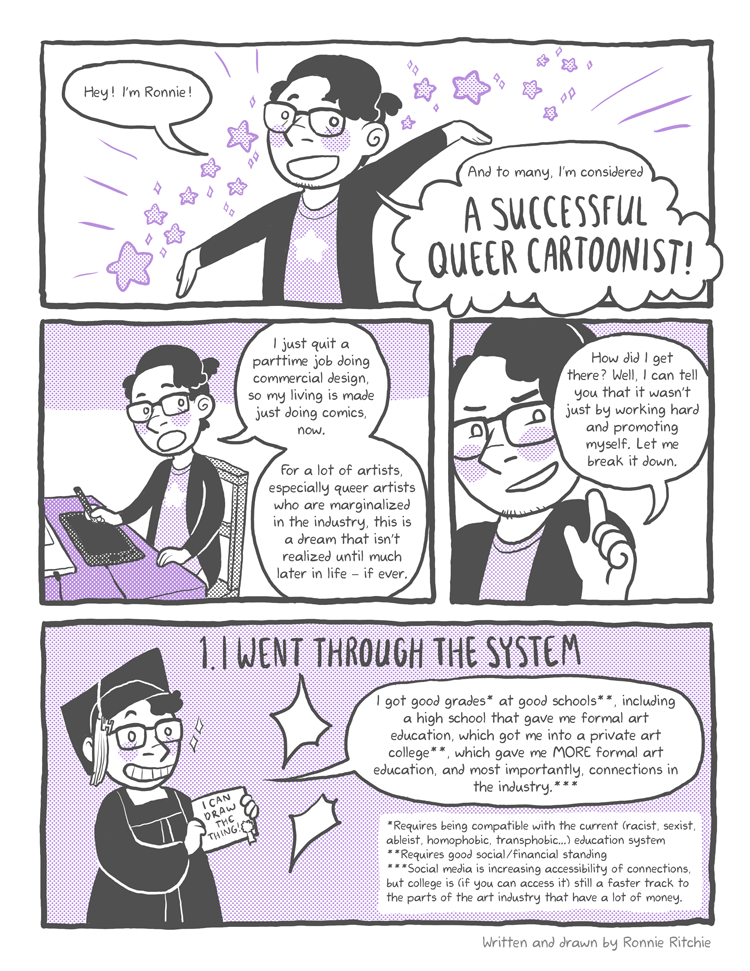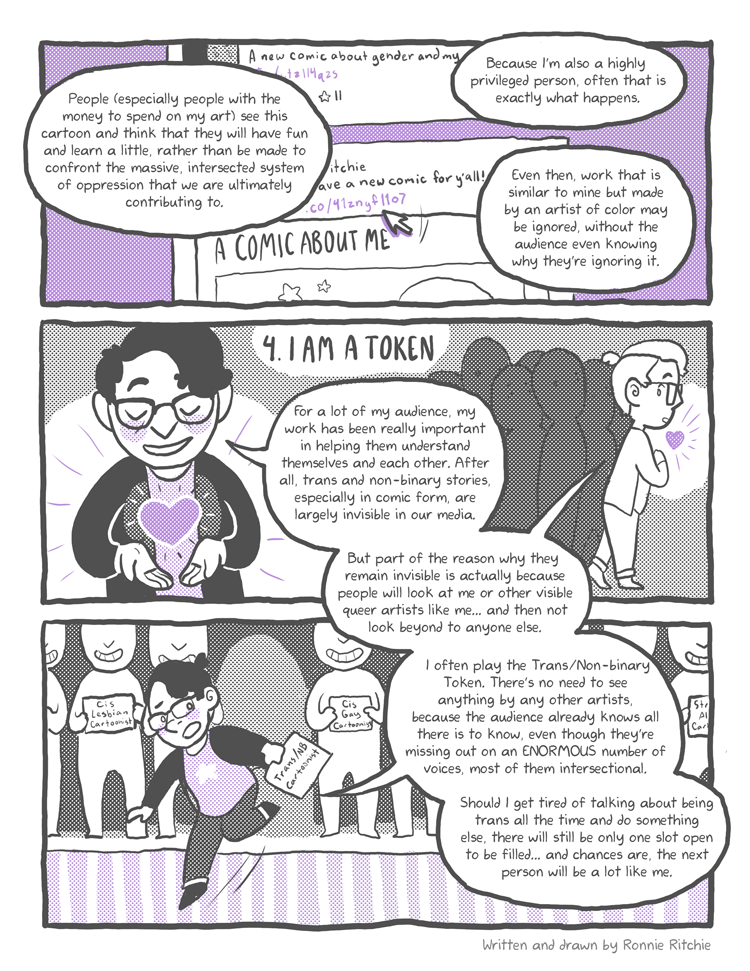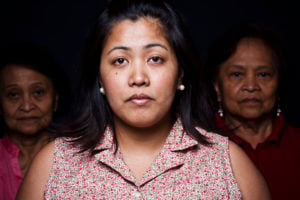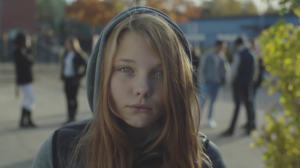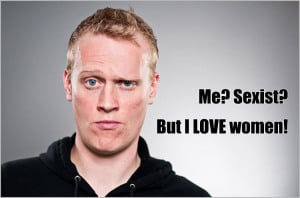Panel 1
Ronnie: (in center of space, addressing readers) Hey! I’m Ronnie, and to many, I’m considered a SUCCESSFUL QUEER CARTOONIST!
Panel 2
Ronnie: (at desk, drawing) I just quit a part-time job doing commercial design, so my living is made just doing comics, now. For a lot of artists, especially queer artists who are marginalized in the industry, this is a dream that isn’t realized until much later in life – if ever.
Panel 3
Ronnie: (close up) How did I get there? Well, I can tell you that it wasn’t just by working hard and promoting myself. Let me break it down.
Panel 4
Text: 1. I Went Through the System
Ronnie: (in a cap and gown, holding a piece of paper that says “I Can Draw the Thing!” with a ribbon) I got good grades* at good schools**, including a high school that gave me formal art education, which got me into a private art college**, which gave me MORE formal art education, and most importantly, connections in the industry.***
*Requires being compatible with the current (racist, sexist, ableist, homophobic, transphobic) education system
**Requires good social/financial standing
***Social media is increasing accessibility of connections, but college is (if you can access it) still a faster track to the parts of the art industry that have a lot of money.
Panel 5
Text: 2. I Have a Sponsor
Ronnie: (at desk still, speaking – at another desk in the background, supposedly working, Ronnie’s partner turns around and waves.) While my main job is what I want to do, I don’t yet earn enough to support myself on my own. Luckily, my partner earns enough for make up for it. He also supported me for the six months of unemployment before my current jobs. This includes utilities, food, the car, medical expenses (as an underinsured person), immigration, and other daily expenses.
Panel 6
Ronnie: (at a cashier, looking haggard while rushing to pack groceries) Most of the artists I know – especially those around my age – don’t have a “sponsor” to the degree that I do, and they rarely make art because after their shifts, usually at minimum wage jobs in the service industry, they’re too tired to create. Like my parents did during college, my partner gives me the ability to spend more of my energy on art than on survival.
Panel 7
Text: 3. I Am “Approachable”
Ronnie: (makes an open gesture, with hearts coming out) My work has been praised as cute, friendly, and approachable, which helps to draw in viewers. But what people don’t realize is that “friendly” and “approachable” is often code for “white.”
Panel 8
(A person looks nervously across the street as a Black person crosses by.)
Ronnie: People of color, especially Black people, but also Indigenous and Latinx people, are labeled as angry, scary people, not friendly and approachable.
Panel 9
(Image of a social media feed with two posts by artists promoting their new gender-based autobiographical comics, one done by an artist of color, and one done by Ronnie. A computer cursor is moving to click on Ronnie’s link.)
Ronnie: People (especially people with the money to spend on my art) see this cartoon and think that they will have fun and learn a little, rather than be made to confront the massive, intersected system of oppression that we are ultimately contributing to. Because I’m also a highly privileged person, often that is exactly what happens. Even then, work that is similar to mine but made by an artist of color may be ignored, without the audience even knowing why they’re ignoring it.
Panel 10
Text: 4. I Am The Token
Ronnie: For a lot of my audience, my work has been really important in helping them understand themselves and each other. After all, trans and non-binary stories, especially in comic form, are largely invisible in our media.
Ronnie: (looking to the side reveals a cluster of people behind Ronnie, hidden in the shadow) But part of the reason why they remain invisible is actually because people will look at me or other visible queer artists like me… and then not look beyond to anyone else.
Panel 11
Ronnie: (on a stage in a spotlight with multiple other artists, many holding up signs like “Cis Gay Cartoonist” and “Cis Lesbian Cartoonist” – Ronnie is holding a sign that says “Trans/Non-binary Cartoonist.” Ronnie is stepping off the stage, leaving one space in the spotlight open.) I often play the Trans/Non-Binary Token. There’s no need to see anything by any other artists, because the audience already knows all there is to know, even though they’re missing out on an ENORMOUS number of voices, most of them intersectional. Should I get tired of talking about being trans all the time and do something else, there will still be only one slot open to be filled… and chances are, the next person will be a lot like me.
Panel 12
Ronnie: (at a desk, working hard. They are sweating as they draw, their arm a blur. Papers fly everywhere.) Working to improve your work and promote it is still important, but the path to success is less universal than we’re taught. It’s actually extremely specific, suited only to people who are privileged enough.
The idea that if you’re not “successful” in the comics world (and out of it, too), you’re just not working hard enough, just supports the dominance of white/cis/male/straight/able artists in the industry, and leads marginalized artists to hate themselves for not being able to navigate an industry that is stacked against them.
Panel 13
Ronnie: You have to actively seek out marginalized artists, especially artists with multiple intersections of oppression in their lives. Examine why you may or may not like their work, or even see it. And maybe support them by buying their art or making donations while you’re at it!
